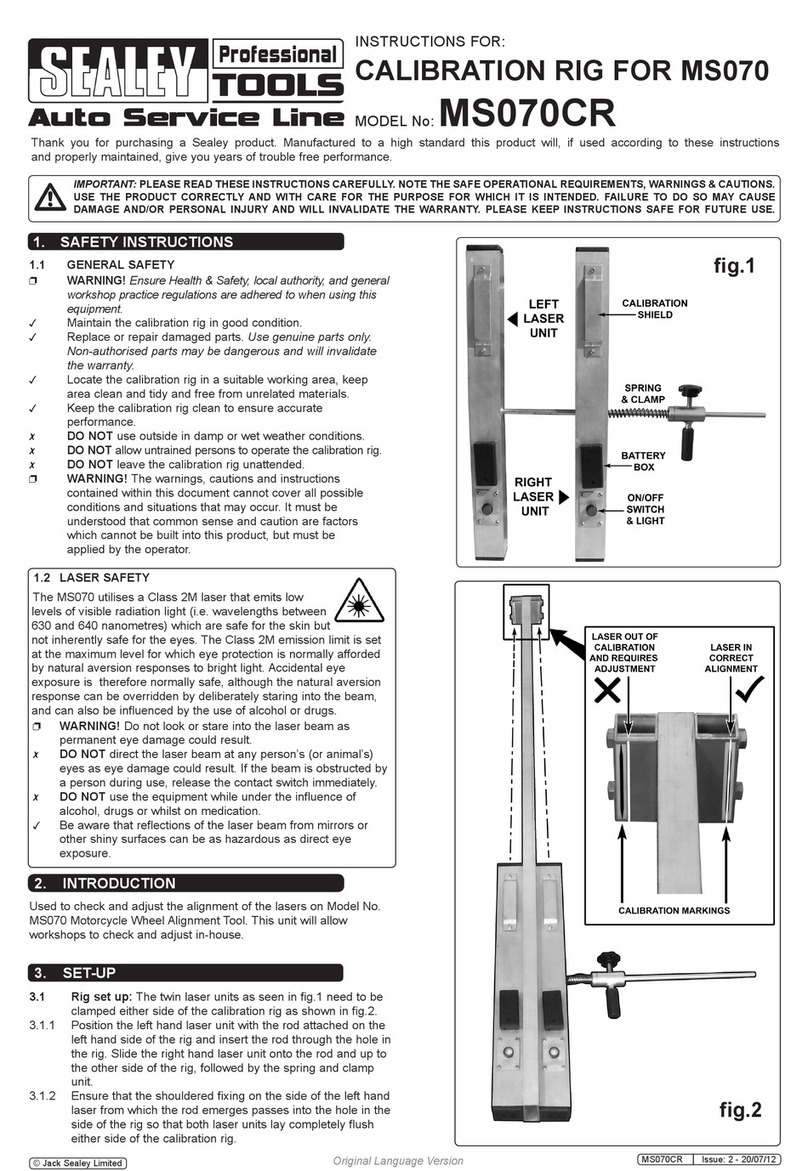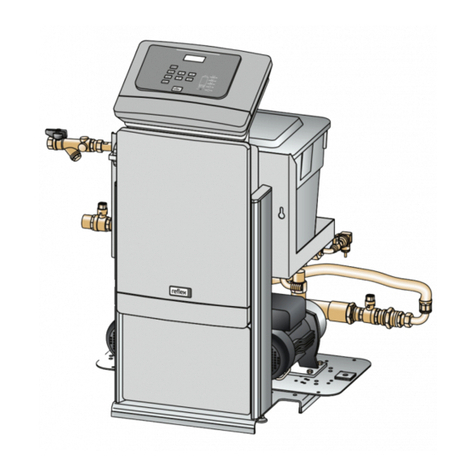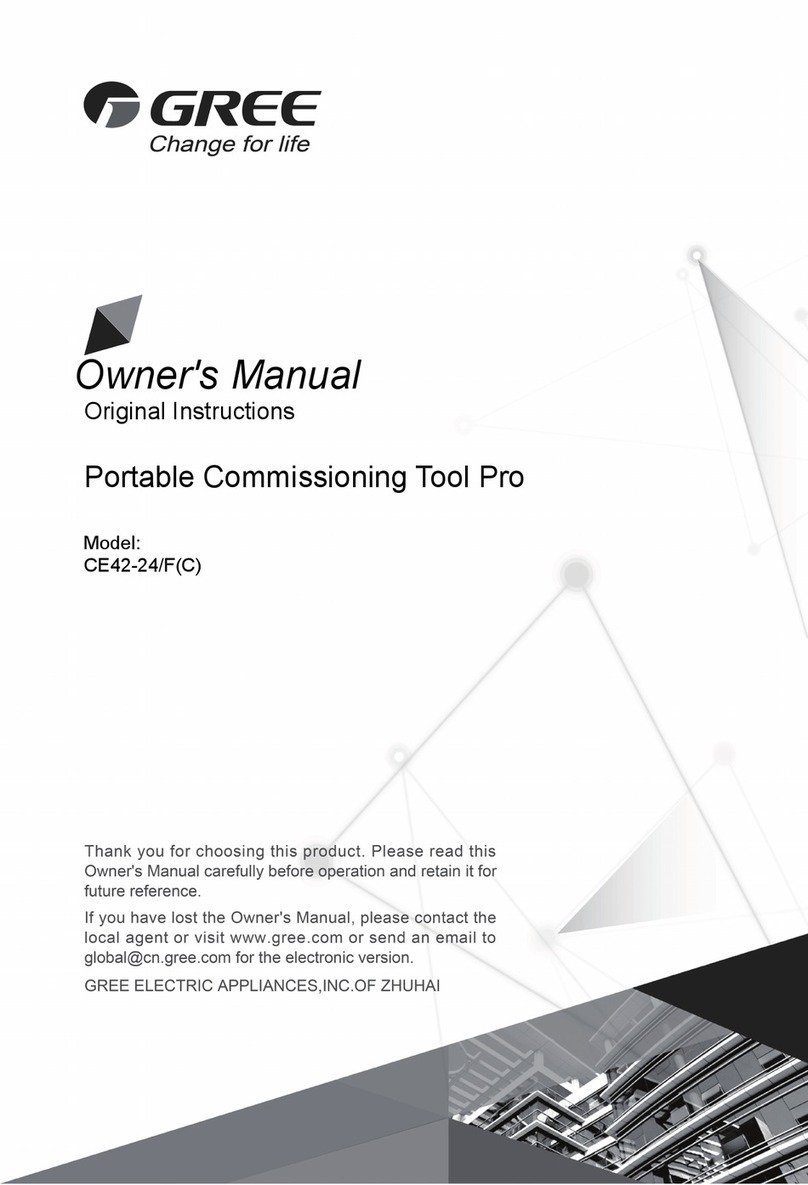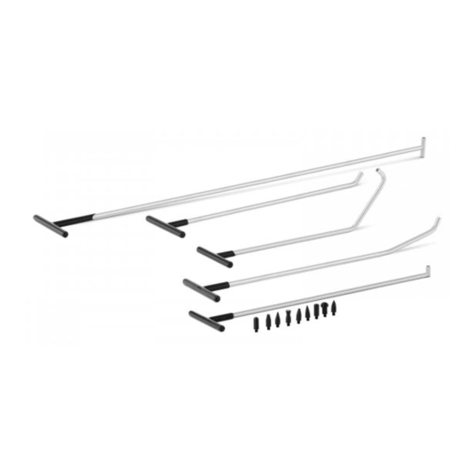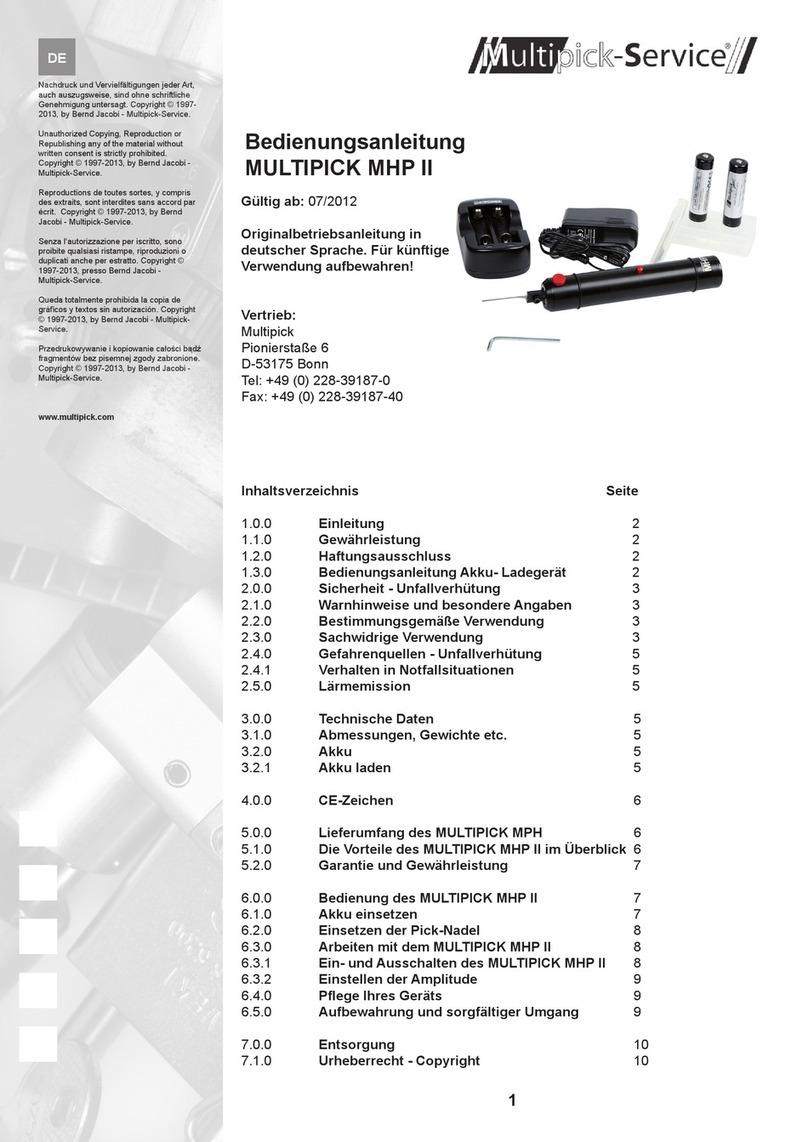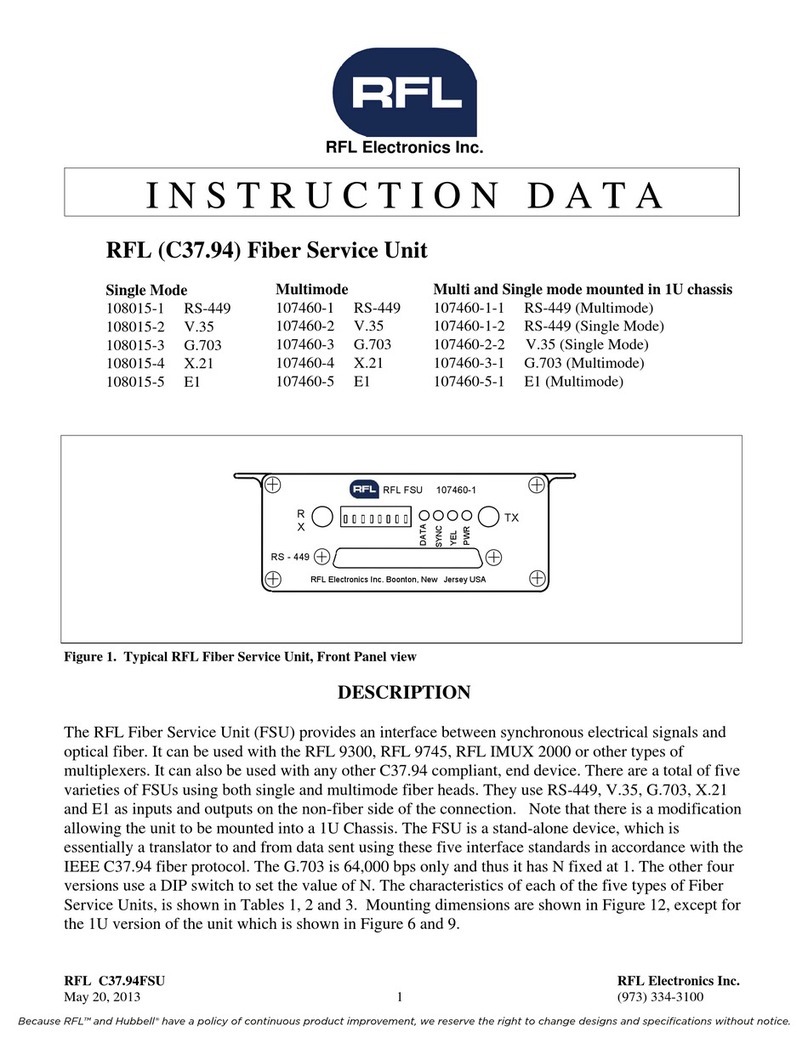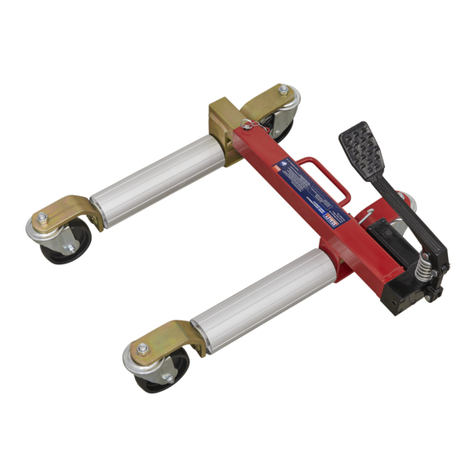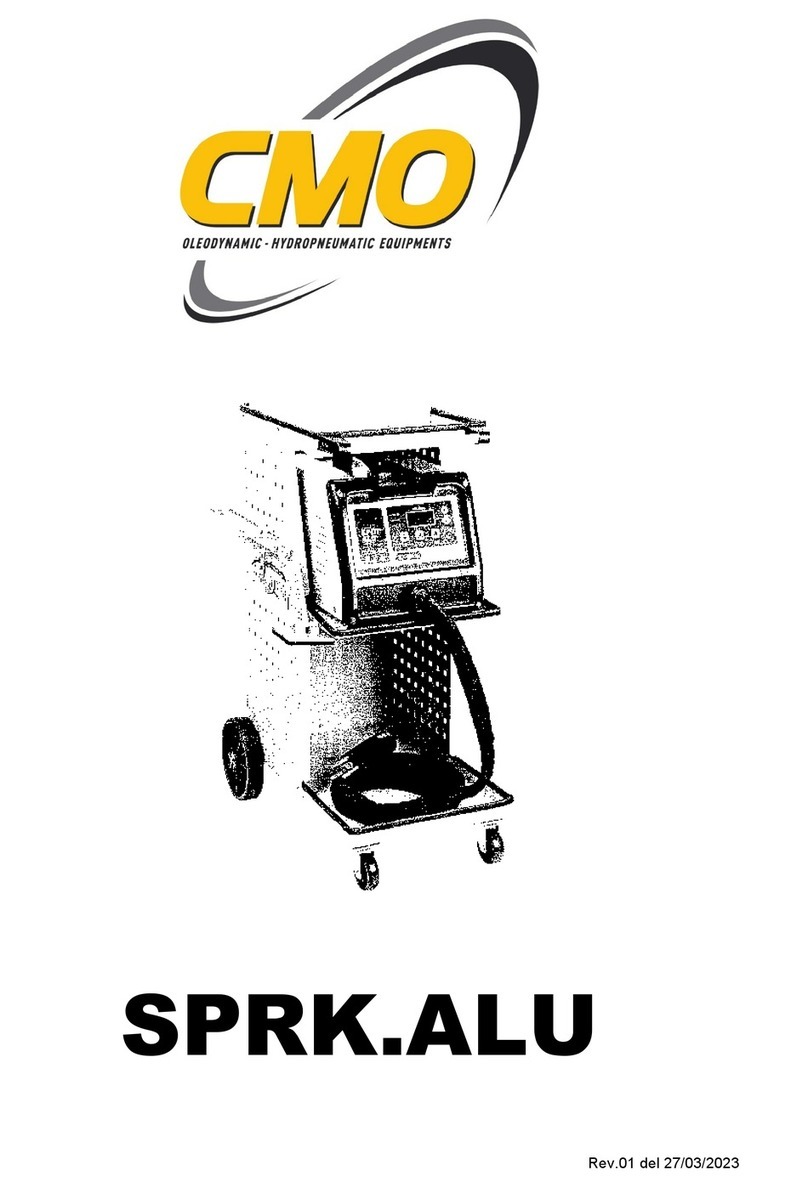Garmat Chinook II User manual

1
Operations and Maintenance Manual
Garmat USA,Inc.
Chinook II Paint Spray Booths
Garmat USA, Inc. 1401 W. Standford Ave. Englewood, CO 80110
(800) 442-7628 ph. (303) 781-2683
www.garmat.com

2
OPERATIONS AND MAINTENANCE INSTRUCTIONS
OPERATIONS INSTRUCTIONS…………………………………………. Page 3
MAINTENANCE INSTRUCTIONS………………………………………. Page 7
MAINTENANCE SCHEDUAL.………………………………………….. Page 8
TROUBLESHOOTING…………………………………………………….. Page 10
OPERATION SEQUENCE………………………………………………… Page 10
FILTER CHANGE RECORD……………………………………………… Page 12
WARNING LABLES……………………………………………………… Page 13

3
OPERATIONS INSTRUCTIONS ENCLOSED
PAINT BOOTH
Garmat® Booth/Oven
WARNING: FAILURE TO HEED
WARNINGS INCLUDED IN THIS MANUAL
COULD RESULT IN PROPERTY DAMAGE,
PERSONAL INJURY, AND/OR DEATH.
The Garmat® Tier 1 Paint Booth is designed and
manufactured in the United States. The Garmat®
Tier 1 Paint Booth provides the optimal environment
for the application of fine automotive finishes.
Through continuous product design and
improvement, Garmat® is committed to providing
you and your customer with the finest automotive
finish possible. Thorough study of this manual will
not only aid you in your pursuit of a fine finish, it
will assist you in making your pursuit safer and
easier.
SUGGESTIONS FOR SAFETY
Before using this unit be sure to read all of the
operation instructions and these safety suggestions
carefully. Afterward, place them in the main control
panel of the booth for future reference. Take special
care to follow the warnings indicated on the unit, as
well as the operating instructions.
PREPARATION OF THE CAR
One of the key elements of a fine finish is a dust free
environment. The design of a Garmat® Tier 1 Paint
Booth is centered on providing a relatively dust free
environment. Your preparation of the car before it
enters the booth is very important to maintain a dust
free environment.
Before moving the car into the spray booth, after the
body of the car is properly prepared to accept the
finish, wash the entire vehicle. Attention during the
wash procedure should be directed to the underside
of the vehicle as well. When the vehicle is
completely dry and ready for refinishing, the entire
vehicle should be blown off with compressed air.
Again, attention must be paid to crevices around
the hood, trunk lid, doors, air vents, etc.
Masking of the vehicle should be performed
outside of the booth. Remember, your efforts to
introduce a clean vehicle into a relatively dust-free
environment provided by the Garmat Frontier
Paint Booth will assist you in your pursuit of the
finest finish with a minimum of work.
PREPARATION OF THE PAINTER
Proper protective clothing and gear is essential for
the safety of the painter and production of a quality
paint job. Paint suits are readily available in a
variety of styles. Garmat® recommends a close
weave nylon type that breathes and has a hood.
The suits should be cleaned regularly and should
be worn only when the painter is actually engaged
in painting. The painter should remove all dust
from his clothes before putting the paint suit on.
Whenever entering the Paint Booth, all dust should
be removed from the paint suit, and any
equipment. Anything that the painter brings into
the booth is a potential cause of dust.
WARNING: APPROVED RESPIRATORS
MUST BE WORN WHENEVER FINISHES
ARE APPLIED.
NOTE: THE BOOTH MUST BE
OPERATING WHENEVER ENTERING
THE BOOTH
The Painter should try to stay in the booth as much
as possible and limit going in and out between
paint coats. He should have enough paint in the
booth to complete that portion of the job.
PAINT BOOTH ENTRY
The Garmat® Tier 1 Paint Booth can be installed
in a variety of configurations. Your Paint Booth as
installed will include some of the following
features:

4
FRONT ENTRY
DRIVE-THROUGH
Always center vehicle side-to-side, and front to back
on the floor.
NOTE: THE BOOTH FANS MUST BE
RUNNING WHENEVER A CAR IS MOVED
IN OR OUT. THIS WILL REDUCE THE
POSSIBILITY OF CONTAMINATION
FROM THE SHOP
FRONT ENTRY AND DRIVE THROUGH:
Before moving a vehicle into the booth, assure that
the vehicle and/or any attachments, i.e. mirrors,
antennas, etc. will fit through the door you intend to
use. All recommended preparation procedures
outlined above must be completed. The booth must
be operating. Vehicles should be driven slowly and
carefully. Rapid acceleration or hard braking should
be avoided at all times.
SUGGESTIONS FOR SAFETY
Before using this unit be sure to read all of the
operating instructions and these safety suggestions
carefully. Afterward, place them in the main
electrical control panel for future reference. Take
special care to follow the warnings indicated on the
unit itself as well as the operating instructions.
WARNING: IF YOU SMELL GAS:
1. OPEN WINDOWS.
2. DO NOT OPERATE ELECTRICAL
SWITCHES.
3. EXTINGUISH ANY OPEN FLAME.
4. IMMEDIATELY CALL YOUR GAS
SUPPLIER.
WARNING: DO NOT USE OR STORE
GASOLINE, PAINT, OR OTHER
FLAMMABLE MATERIALS NEAR THE
INTAKE AIR HEATER APPLIANCE (BOOTH
MECHANICALS).
WARNING: WHEN VEHICLES ARE
EQUIPPED WITH PROPANE (LPG) FUEL,
THE FUEL TANK MUST BE LESS THAN
HALF FULL BEFORE MOVING THE
VEHICLE INTO THE BOOTH. THE
PROPANE (LPG) TANK MUST HAVE
ROOM FOR EXPANSION WITHIN THE
TANK DURING BAKE CYCLE.
WARNING: DO NOT ENTER THE BOOTH
DURING THE BAKE CYCLE.
WARNING: APPROVED RESPIRATORS
MUST BE WORN WHENEVER FINISHES
ARE BEING APPLIED.
The booth fans must be running whenever a car is
moved into or out of the booth. The booth must be
running whenever personnel are entering the
booth.
Consult with your paint jobber or manufacturer
concerning recommended refinishing
temperatures, recommended bake temperatures
and times.
WARNING: DO NOT EXPOSE THIS
EQUIPMENT TO EXCESSIVE MOISTURE
OR RAIN. DO NOT PRESSURE WASH OR
HOSE WASH THE INTERIOR,
EXTERIOR OF THE CABIN OR ITS’
RELATED EQUIPMENT. THIS WILL
VOID THE CABIN WARRANTY.
Review the recommended maintenance procedures
and insure that the prescribed schedule is followed.
Disconnect all electrical supply and lock-off
whenever covers on the mechanicals are removed
for maintenance procedures.
Do not over-tighten the fan belts. Proper tension is
when there is ½” deflection at a mid point between
the pulleys with moderate pressure on the belt. Belt
tension testers are available from drive belt
suppliers. Drive belts should be adjusted after the

5
first 40 hours of use and every three months after
that.
In addition to adjustments explained in the
maintenance instructions, you may attempt repairs
your self. However, if you are not sure how to repair
the unit, be sure to request service from a qualified
technician or your local distributor.
THE CONTROLS
Identification of components. The control
components are located on the face of the Remote
Control Panel. There are three available options for
control of the booth.
42004(X) Exhaust Only:
1. SPRAY SWITCH, is a black push button
switch that will start the exhaust fan when
pushed.
2. OFF SWITCH, is a black push button that
will turn the exhaust fan off when pushed.
3. LIGHT SWITCH, is a toggle switch, which
turns the lighting on and off.
42104(X) Intake & Exhaust, No Heat:
1. SPRAY SWITCH, is a black push button
switch that will start the intake and exhaust
fans when pushed.
2. OFF SWITCH, is a black push button
switch that will turn off the intake and
exhaust fans when pushed.
3. LIGHT SWITCH, is a toggle switch that
turn the lighting on and off.
4. INCREASE/DECREASE PRESSURE
SWITCHES, are black push buttons that
open and close the pressure damper.
83400 / 83600 /42106(X) WITH HEAT:
1. SPRAY SWITCH, is a black push button
switch that will start the intake and exhaust
fans when pushed.
Table of contents
Other Garmat Service Equipment manuals
Popular Service Equipment manuals by other brands
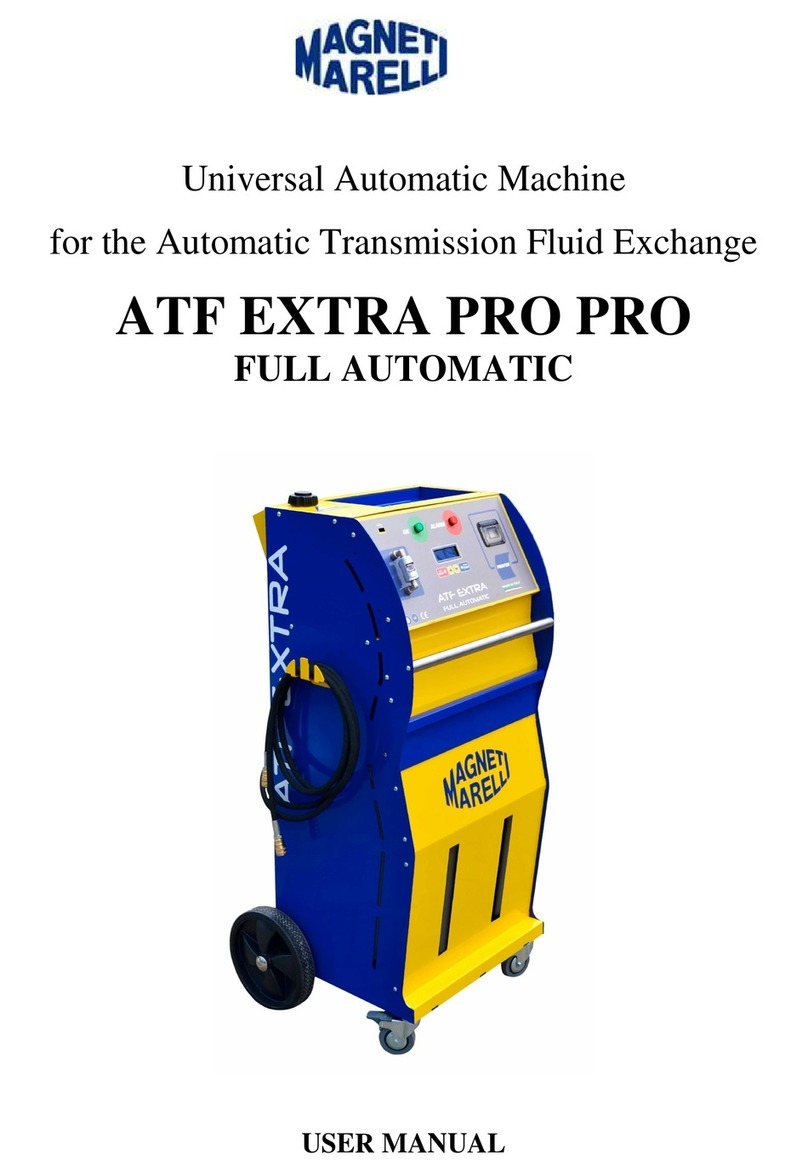
Magneti Marelli
Magneti Marelli ATF EXTRA PRO user manual
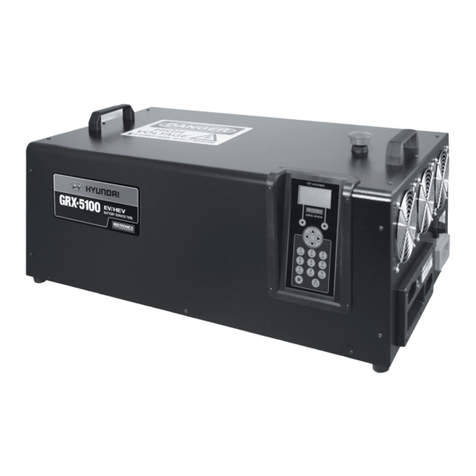
Hyundai
Hyundai Midtronics GRX-5100 instruction manual

Tronair
Tronair 01-1229-0011 Operation & service manual
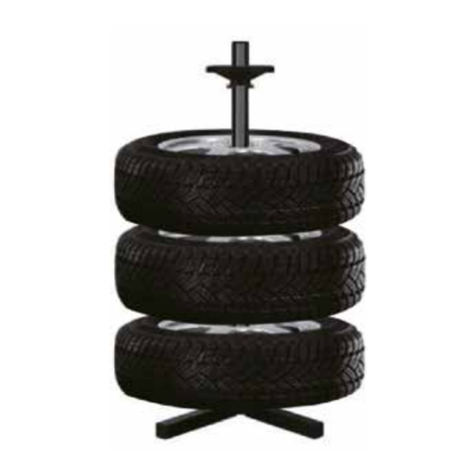
ULTIMATE SPEED
ULTIMATE SPEED HG02236 Assembly and Safety Advice
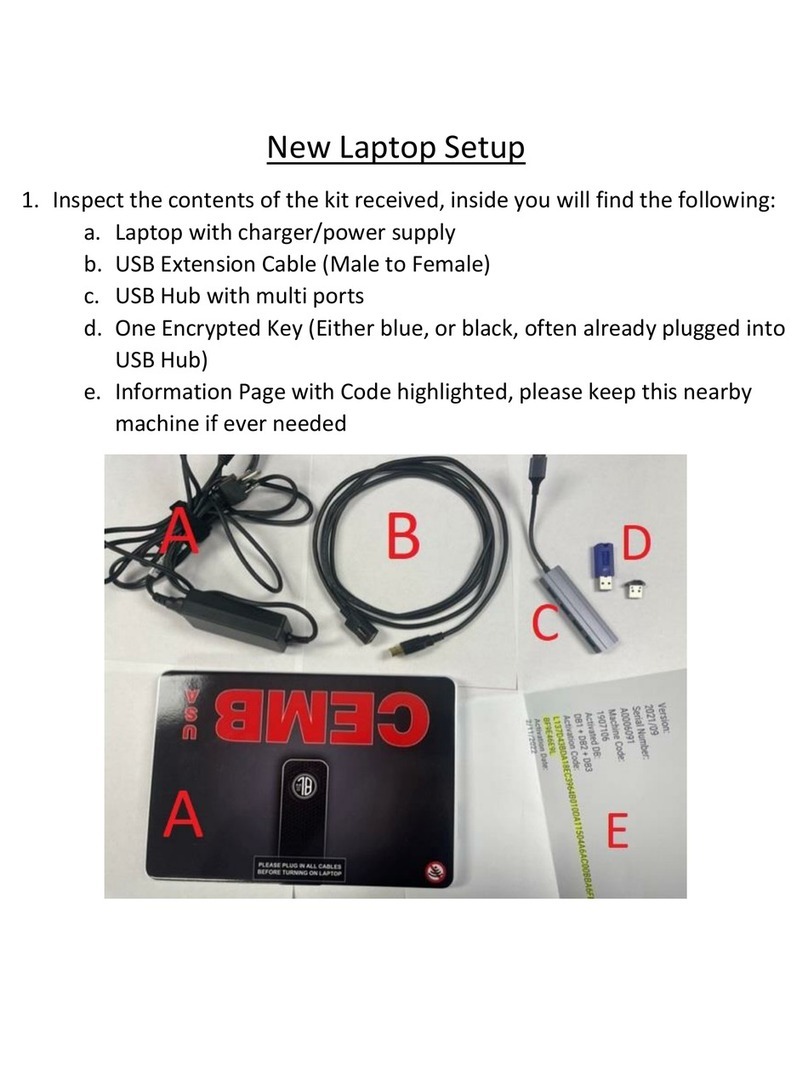
CEMB
CEMB DWA1000CWAS manual
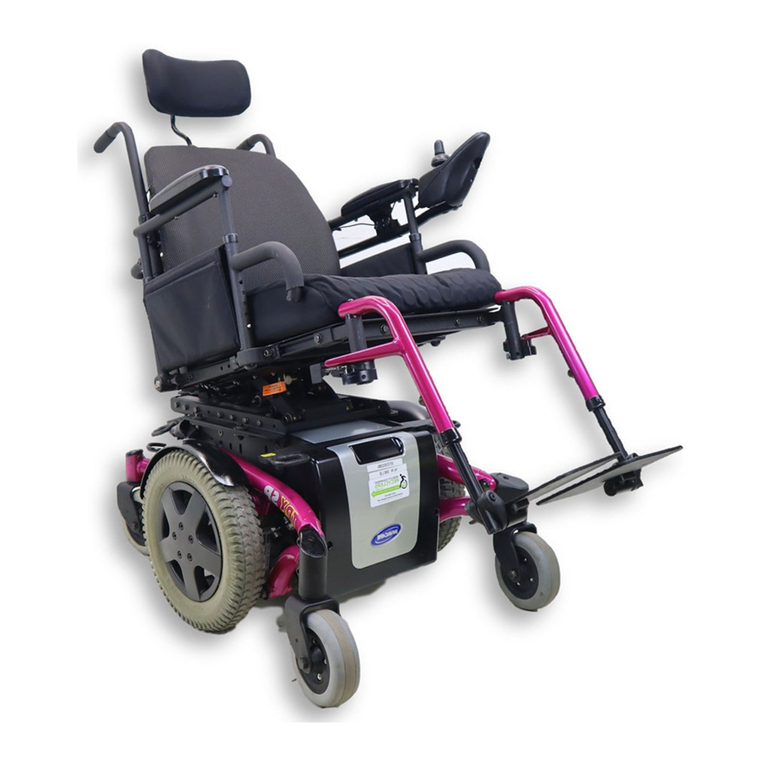
Invacare
Invacare TDX SP Assembly, installation and operating instructions




